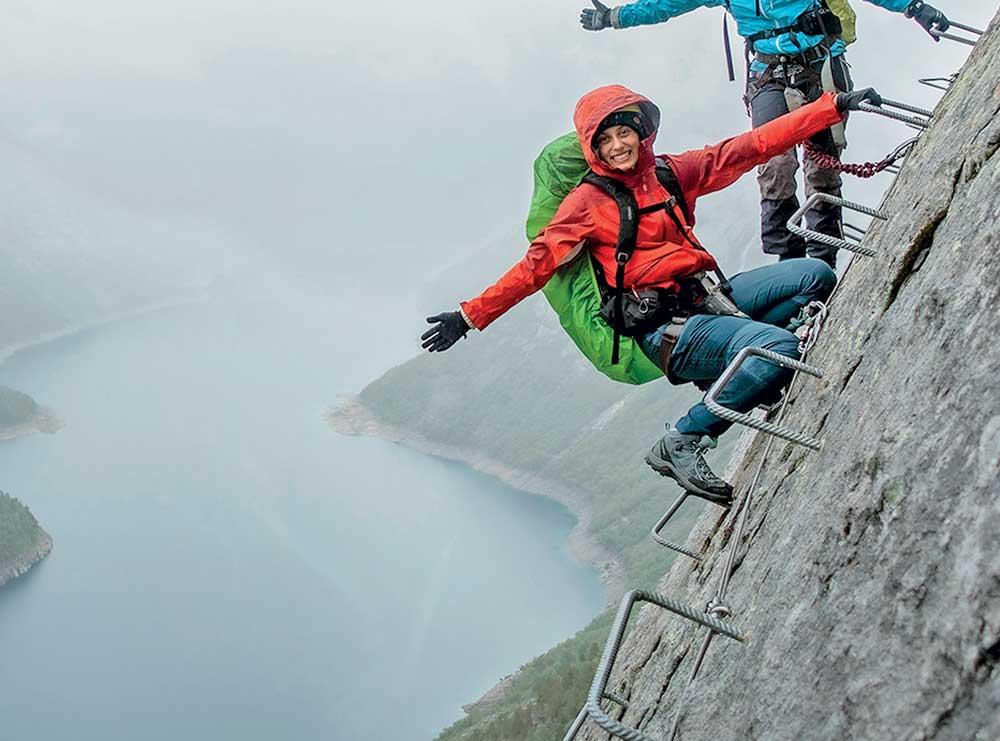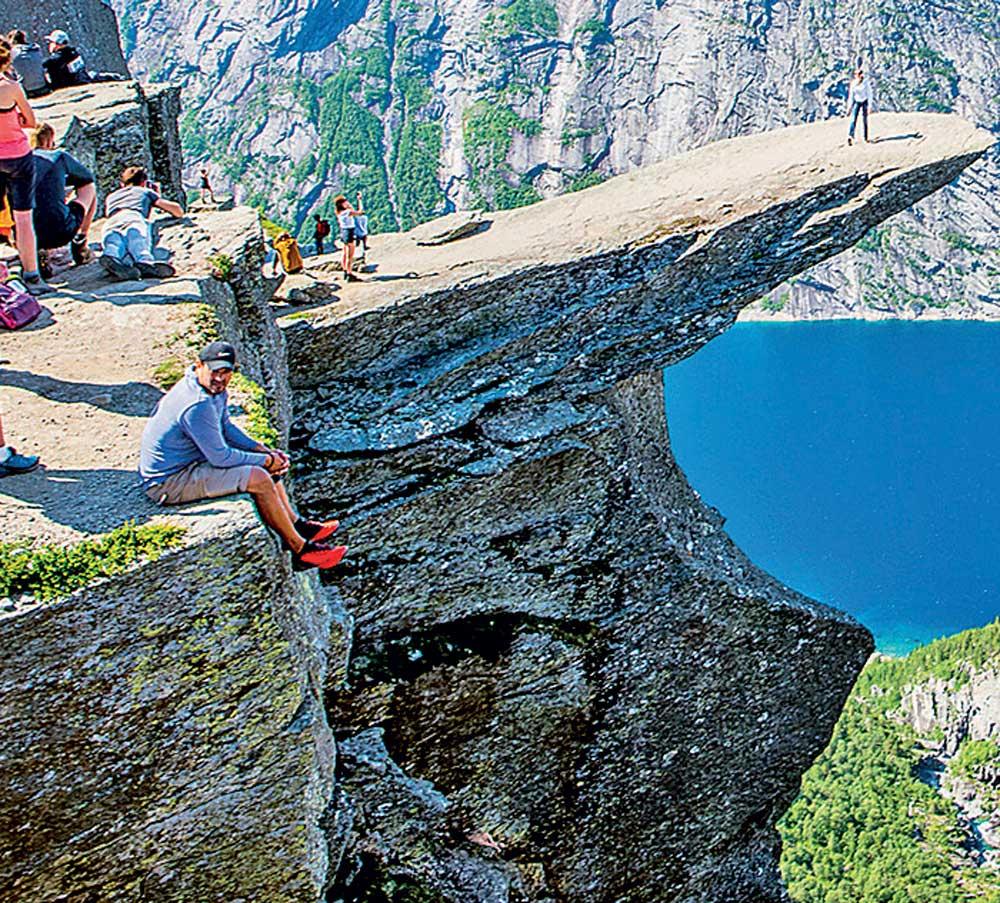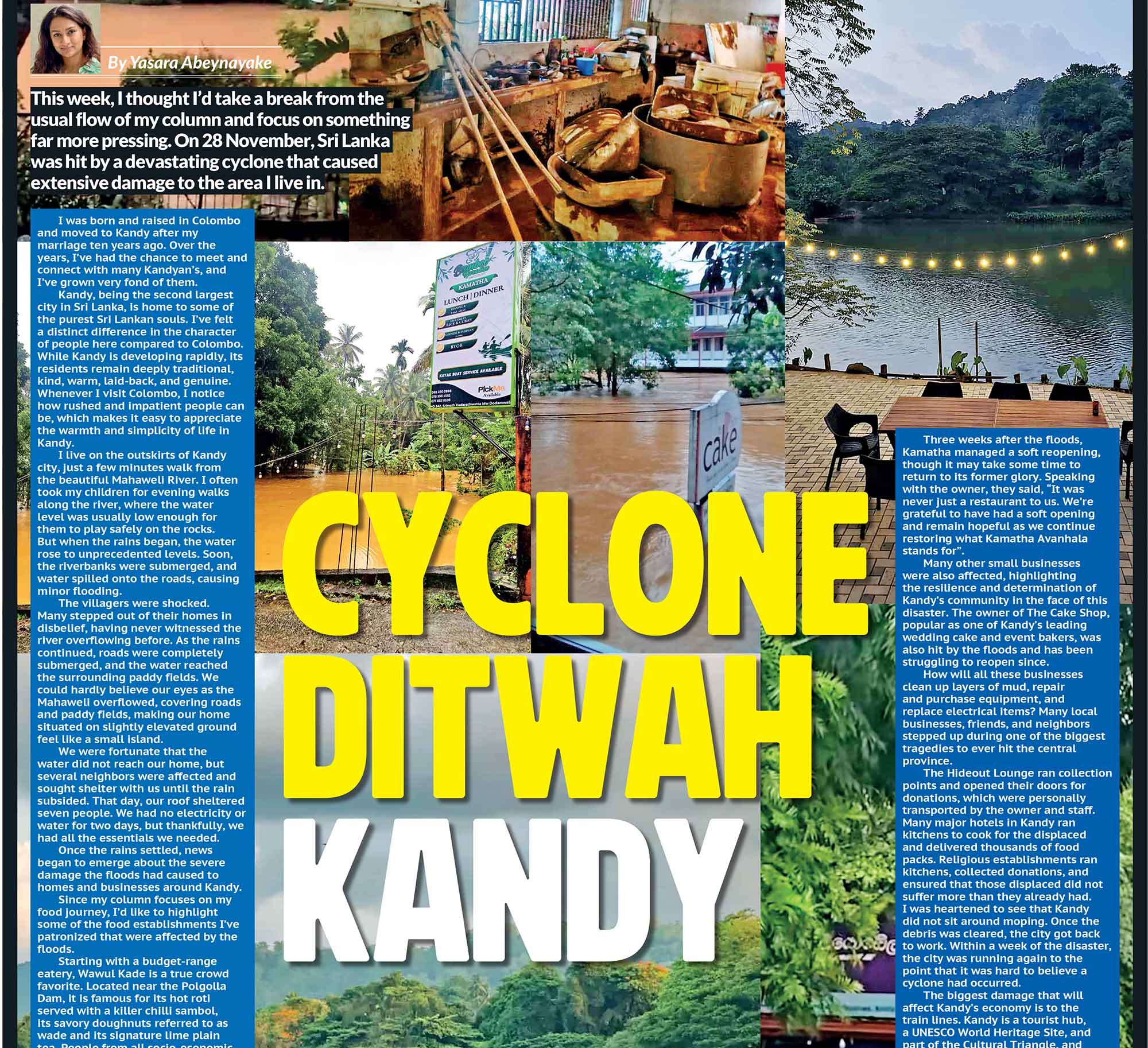If you were told there’s a place on Earth where you could sit on the tongue of a troll and dangle your feet above a thousand meters of pure wilderness, would you believe it?


- Trolltunga isn't a place you accidentally stumble upon. It’s tucked away in Odda, a sleepy town in Western Norway, surrounded by glaciers, fjords, and more sheep than people.
Welcome to Trolltunga; Norway’s wild, remote, and absolutely surreal cliff that juts out horizontally like the tongue of a sleeping giant. Perched 1,100 meters above sea level and overlooking the sparkling blue waters of Lake Ringedalsvatnet, Trolltunga (which literally means The Troll’s Tongue) is one of the most breathtaking, yet least commercialized wonders in Europe. But don’t be fooled by Instagram pictures. What makes Trolltunga truly mesmerizing isn’t just the view. It’s the story behind it; the trek, the silence, the wind, and the sense that you’re standing on the edge of a Norse legend. Because in many ways, you are.
The Forgotten Cliff in a Digital World
Trolltunga isn't a place you accidentally stumble upon. It’s tucked away in Odda, a sleepy town in Western Norway, surrounded by glaciers, fjords, and more sheep than people. For centuries, the cliff was a well-kept secret among locals. No signs. No tourist booths. Just towering rock and icy silence. But in the last decade, something magical happened; an image of a lone hiker standing on the tongue, wrapped in morning mist and the endless sky, went viral. And like a secret whispered too many times, Trolltunga’s myth began to spread. Yet even now, this isn't your average tourist trap. No cable cars. No fences. No Starbucks. Just nature. Raw, unforgiving, and majestic.
To reach the Troll’s Tongue, you need more than wanderlust. You need grit.
It starts with a hike; a 27-kilometer round trip that takes anywhere from 8 to 12 hours, depending on your pace and the weather. Some parts of the trail are steep enough to make your calves scream. Others lull you into a rhythm with gentle mossy paths and wooden bridges. But all of it feels like something out of a Tolkien novel; waterfalls tumbling off granite cliffs, patches of snow in summer, and the occasional curious arctic fox peeking from behind a boulder. Many hikers say the trail itself is more unforgettable than the cliff. You begin the journey as a traveler, but somewhere along the way; perhaps after slipping on a patch of ice or standing in the rain with numb fingers; you realize this is more than a hike. It’s a slow shedding of modern life. No buzzing phones. No city noise. Just your heartbeat and the occasional echo of your breath.
And then it appears.
After hours of trekking, just when your feet begin to rebel, you see it; a blade of rock slicing through the air, protruding like a daring tongue from the cliff face. There’s no fence to stop you. No guardrails. Just a single red “X” painted on the rock to mark the spot.
This is where people change.
Some walk out and scream. Others cry. Some sit in silence, their legs swinging over 700 meters of vertical drop. And in that moment, you understand why ancient Norse legends spoke of trolls turning to stone at sunrise because Trolltunga feels like something alive. Ancient. Watching. The view below is a mosaic of blues and grays. Lake Ringedalsvatnet shimmering like melted sapphire, with snow-capped peaks standing sentinel in the distance. The wind here doesn’t blow. It speaks.
Recently, Norway introduced an innovation that might sound contradictory to the rugged nature of Trolltunga; “Trolltunga Via Ferrata.”
Via Ferrata, meaning "Iron Path" in Italian, is a system of steel cables, rungs, and ladders bolted into the mountain, allowing adventurers to climb to the tongue rather than hike. This isn’t for the faint of heart, but it’s a unique way of marrying human innovation with natural preservation. Climbers gear up with helmets and harnesses, guided by professionals who ensure both safety and education about the ecosystem. It’s a fusion of thrill and responsibility; a perfect example of how the world is finding new ways to connect with wild places without destroying them. There’s also been talk of augmented reality waypoints, where hikers can scan QR codes at certain points to learn about glacial formations, local folklore, or endangered species. Technology used not to dominate nature but to deepen our connection with it.
Trolltunga is more than a pretty backdrop. It’s part of a deeper cultural myth.
In Norse folklore, trolls are mighty beings some wise, some terrifying, who dwell in the mountains and turn to stone when caught in sunlight. Many believe Trolltunga is the petrified tongue of such a creature, frozen mid-laugh or mid-scream. But the modern myth is more personal. Hikers report feeling changed after visiting. Not because of the altitude, but because of the perspective. Standing on that ledge, life narrows into focus. Things like unread emails, late-night scrolling, and office gossip fall away. What remains is primal: breath, wind, silence, and awe.
It’s one of the rare places where nature doesn’t just humble you it invites you into its story.
The Hidden Wonder of Trolltunga, Norway
A Responsibility to the Wild
With popularity comes risk. More people now visit Trolltunga than ever before. While that’s a testament to its power, it also threatens the fragile alpine environment. Norwegian rangers work hard to protect the trail installing composting toilets, marking safe routes, and educating hikers. Visitors are asked to leave no trace, respect wildlife, and consider the privilege of being in such a place. And it is a privilege to walk into a living legend.
How to Get There (and Why You Should)
Getting to Trolltunga takes effort, but that’s part of the magic. The closest major city is Bergen, and from there, you can reach Odda by train and bus. Overnight stays in Odda or the nearby village of Tyssedal are common before embarking on the hike. The hiking season typically runs from mid-June to mid-September, when conditions are safest. Outside those months, it’s only recommended with a certified guide due to snow, fog, and dangerous weather changes.
But if you do go, prepare not just your gear but your soul. Because Trolltunga isn’t just a place you visit. It’s a place that visits you.
In a world of algorithms, deadlines, and TikTok trends, Trolltunga is a reminder of something ancient and real. It doesn’t scream for attention; it waits. Patiently. And when you finally meet it; panting, sweating, laughing you’ll realize you haven’t just found a hidden wonder. You’ve rediscovered yourself.











